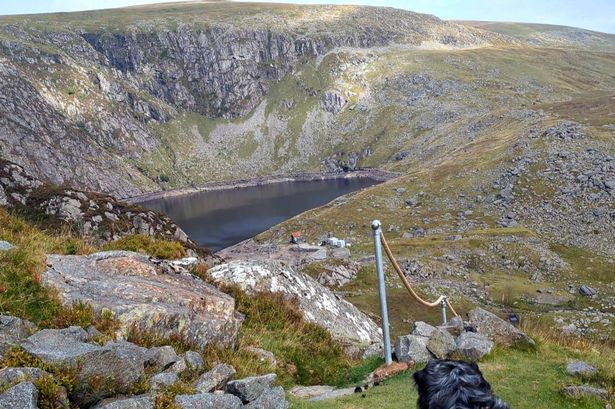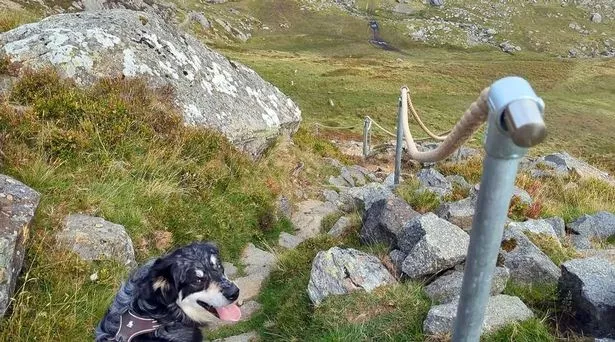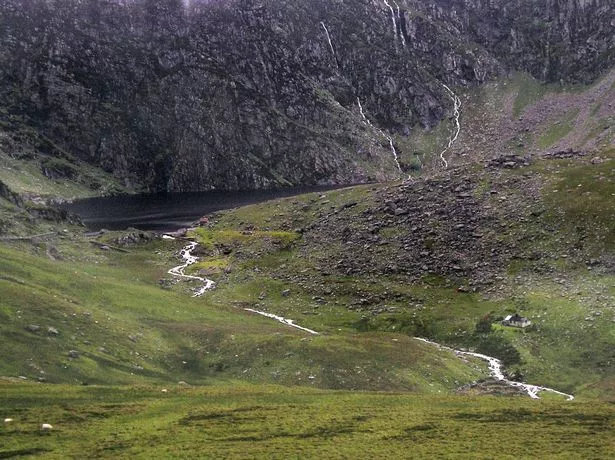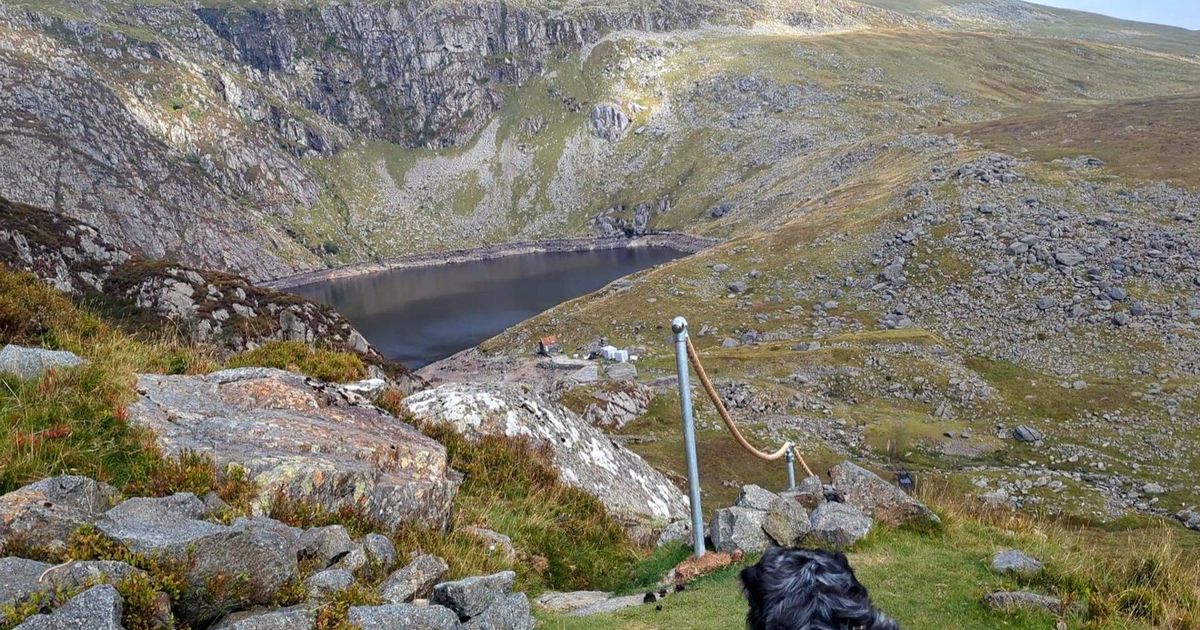The roped support was spotted by a regular hiker in the mountains but there is a good reason for its existence The rope handrail runs down towards Dulyn reservoir(Image: Hilary Pullen/Nearly Uphill)
The rope handrail runs down towards Dulyn reservoir(Image: Hilary Pullen/Nearly Uphill)
A recently-erected handrail in the isolated peaks of northern Eryri (Snowdonia) has left ramblers stunned and many furious. The rope barrier, positioned along a precipitous stretch of pathway, was condemned as “health and safety gone mad” and criticised for destroying the region’s untamed wilderness.
The installation was discovered by seasoned walker Hilary Pullen, from Prestatyn, Denbighshire. She encountered the handrail while trekking between the Melynllyn and Dulyn reservoirs within the Carneddau range.
“I can only assume it’s a health and safety thing because people are working here?” said Hilary, who documents hiking trails for her Nearly Uphill blog. “Surely not to protect hikers? Can you imagine if they put these on popular routes like Crib Goch?”
The track descends a slope towards Llyn Dulyn, which means ‘Black Lake’ owing to the imposing precipices that lend it a dark and threatening atmosphere. Online responses to the handrail’s necessity triggered fury – it was branded “bonkers”, “ridiculous”, and “vandalism of the natural environment”, reports North Wales Live.
Local farmer Gareth Wyn Jones, who understands the terrain better than most, said: “Leave the Carneddau wild. Natural beauty isn’t for desk jockeys to regulate with handrails.”
One local man voiced his disapproval, stating: “Pathetic! Not something I want to see in wild places.”
 The path is steep but it’s been navigated by walkers for decades without need for a handrail(Image: Hilary Pullen/Nearly Uphill)
The path is steep but it’s been navigated by walkers for decades without need for a handrail(Image: Hilary Pullen/Nearly Uphill)
A woman chimed in with: “Oh my God. Let’s dumb down the countryside.”
Despite being supported by robust steel scaffold poles embedded into the ground the handrail was met with scepticism and compared to ineffective “please don’t walk on the grass” ropes.
The handrail was widely ridiculed with some fearing it could be a slippery slope towards further alterations. Comments ranged from: “Next thing they’ll concrete it” to: “Jeez, they’ll be roping off the coastal paths next”.
In a more light-hearted response, one man quipped: “You know what, there’s been many a time I thought this mountain could do with a handrail, escalator, or an ice cream van or pub at the top.”
A spokesman for Eryri National Park confirmed the land is privately owned and the path is not a designated public right of way and declined to comment further on the matter.
Fencing is occasionally used at beauty spots to prevent erosion or trespassing or to warn of steep drops. Sensitive wildlife sites can also be cordoned off.
In national parks these measures are kept to a minimum to preserve their unique qualities.
Why the handrail has been added
Just as out of place as the handrail is a locked manhole cover situated on the path close by. A water pipeline runs from Llyn Dulyn down to a small 505KW hydroelectric power station at Dulyn weir below.
After its energy has been harnessed the water travels through a tunnel to Llyn Eigiau before eventually feeding the Dolgarrog hydroelectric facility in the Conwy Valley.
This network of connected tunnels, pipes, and weirs needs regular maintenance and upgrades by RWE, the renewables giant that owns it. With work continuing throughout the Carneddau’s brutal winters, when few walkers venture out, the handrail is essential.
Rhodri Jones, lead civil engineer for RWE, said the rope was an essential safety precaution. He said: “As well as being a popular path for walkers this rope handrail sits on what is a designated access route for the Dulyn reservoir that feeds Dulyn power station further down the valley.
 Llyn Dulyn’s dark and brooding waters are used for a hydroelectric scheme(Image: Chris Andrews/Wiki)
Llyn Dulyn’s dark and brooding waters are used for a hydroelectric scheme(Image: Chris Andrews/Wiki)
“With the consent of Eryri National Park this handrail was installed in one of the more challenging parts of this route as part of a package of safety improvements during planned maintenance, being mindful to choose materials that are appropriate for the setting.
“As an employer committed to the health, safety, and wellbeing of our staff and contractors RWE has a responsibility to ensure they can carry out their duties of inspection and maintenance in a safe working environment.
“These statutory inspections are required to be carried our throughout the year in accordance with the Reservoirs Act, often in challenging weather conditions, making this rail necessary.”
RWE runs five hydroelectric facilities across Wales, including Britain’s most ancient power station at Cwm Dyli nestled in the shadow of Yr Wyddfa (Snowdon).
Constructed in 1905 and affectionately dubbed the ‘Chapel in the valley’ by locals, it previously supplied electricity to the Oakeley, Dinorwic, and Pen-yr-Orsedd slate quarries.
Currently managed remotely from Dolgarrog the facility has recently finished an intricate restoration project on its 2km pipeline – a structure criticised as an eyesore on the countryside but which appeared in the James Bond thriller The World Is Not Enough.
